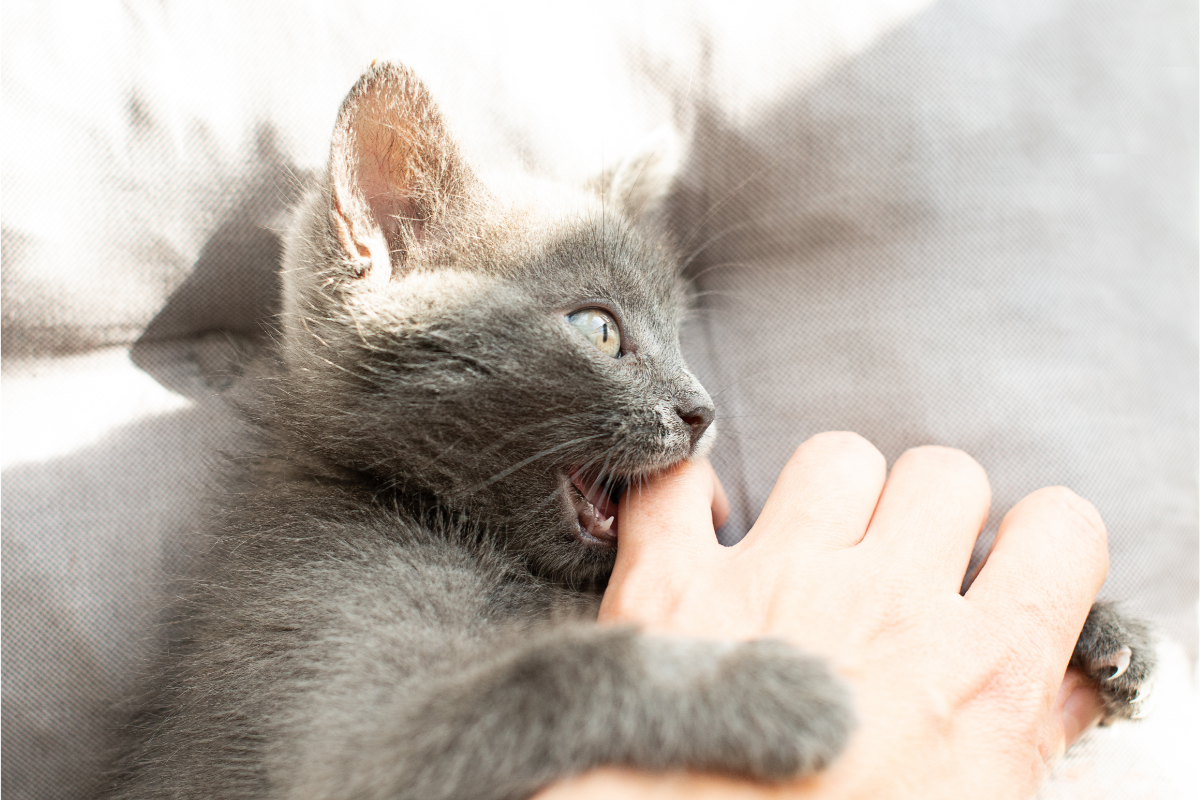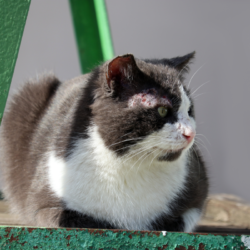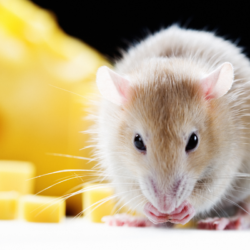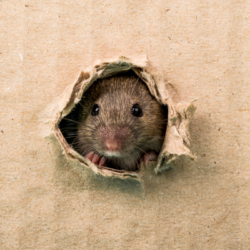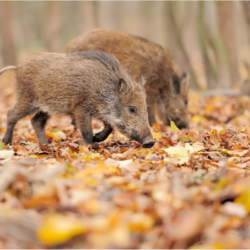Pasteurellosis is a bacterial infection caused by species of the Pasteurella genus, often associated with domestic and wild animals. It can affect humans, mainly through animal bites or scratches, leading to local or systemic infections.
What bacteria are responsible?
Pasteurellosis is an infectious disease that can affect animals and humans, caused by bacteria of the Pasteurella genus, the most common of which in human pathology is Pasteurella multocida.
It is mainly transmitted by the bite or scratch of a dog or cat, which carries the bacteria in 40-50% of cases. Pasteurella is a genus of Gram-negative, facultative anaerobic, catalase-positive bacteria. These bacteria are commensal parasites of the mucous membranes of the upper respiratory, digestive and oral tracts of mammals (rarely humans) and birds. Pasteurella multocida, also known as P. septica, is the bacterium responsible for hen cholera, studied by Louis Pasteur. This bacterium is widespread in various animal species, where it can be a common commensal or a major pathogen.
Pasteurella are small, immobile, Gram-negative coccobacilli that are highly indologous. They can be cultured on standard media and are highly pathogenic for mice (causing septicaemia). The Pasteurellaceae also include the genera Actinobacillus, Mannheimia, Aggregatibacter, Haemophilus and Avibacterium. Bacteria of the Pasteurella genus are found in animals and humans, acting as commensals or opportunistic pathogens and also causing serious infections. In human pathology, four species play a particularly important role: P. multocida (type species), P. dagmatis, P. canis and P. stomatis.
The main sources of infection include secretions from the upper airways (tonsils) and saliva from asymptomatic carrier animals. Pasteurella spp. survive in air, water and oceans, but are sensitive to desiccation, cold, common disinfectants, UV light, microwaves, moist heat (121°C for 20 minutes) and dry heat (165-170°C for 2 hours).
What does infection in animals look like?
Many species of birds and mammals (dogs, cats, rabbits, rodents, ruminants, pigs) contract Pasteurella infections. These bacteria, present worldwide, frequently colonise the oral cavity and upper respiratory tract of carrier animals.
Pasteurella is transmitted via the respiratory tra ct and by bite. Infections caused by these bacteria include respiratory infections, generalised infections such as hen cholera, and abscesses in rabbits, dogs and cats. Pasteurella bacteria are highly prevalent in animals. They are often healthy carriers, whether domestic, farmed, wild or exotic. Pasteurella usually colonises the microbiota of the oro-pharyngeal flora, with a high local abundance.
Hosts of Pasteurella multocida include :
- several bat species (Eptesicus spp., Myotis spp., Pipistrellus spp., Plecotus spp., Vespertilio spp.),
- bighorn sheep (Ovis canadensis),
- various orders of birds (Accipitriformes, Anseriformes, Columbiformes, Charadriiformes, Galliformes, Gruiformes, Passeriformes, Phoenicopteriformes, Sphenisciformes, Strigiformes)
Pasteurellosis also affects domestic animals such as :
- cattle (Bos taurus),
- chickens (Gallus gallus),
- felines (Felis catus),
- goats (Capra spp.),
- rabbits (Oryctolagus spp.),
- sheep (Ovis aries),
- pigs (Sus scrofa domesticus),
- turkeys (Meleagris gallopavo)
- and water buffalo (Bubalus bubalis).
Elks (Cervus elaphus), European brown hares (Lepus europaeus), fallow deer (Dama dama), and various non-human primates (capuchin monkeys, chimpanzees, macaques, South American owl monkeys, squirrel monkeys) are also hosts. The saiga (Saiga tatarica) is also an affected species. Pasteurella pneumotropica mainly infects rodents. Pasteurella testudinis affects turtles (order Testudines), including gopher tortoises, leopard tortoises, pond turtles, red-eared sliders and western box turtles.
How is transmission carried out?
The frequency of cases of pasteurellosis is not well known, but it is prevalent in animals that often remain healthy carriers. Pasteurella bacteria are commensals of the mucous membranes of the upper respiratory tract and digestive tract of mammals and birds. They can cause zoonoses (diseases transmitted from animals to humans).
Pasteurellosis is mainly transmitted by bites and scratches from cats and dogs. In some cases, inhalation of Pasteurella in premises housing infected animals can also be a source of infection.
Professional activities at risk include working in the presence of animals, particularly for vets, breeders (especially of dogs, cats and rodents), slaughterhouse and rendering plant staff and veterinary laboratory staff. Pasteurelles are isolated in 50% of dog bites and 75% of cat bites. Transmission to humans occurs through contact with the animal’s nasopharyngeal secretions or saliva when it bites, scratches or licks its wounds.
The factors that encourage transmission to humans are close contact with animals, whether through work, owning pets, travelling, eating or outdoor activities. Pasteurella multocida is the pathogen most frequently isolated from humans and can cause acute or chronic infections.
Mortality due to Pasteurella is rare in humans thanks to early treatment of bites, but the impact on animal morbidity and mortality is not negligible. In France, it is estimated that there are between 100 and 500 cases of pasteurellosis per 100,000 inhabitants per year.
In short, pasteurellosis is transmitted mainly by bites and scratches from cats and dogs, and in some cases by inhalation of infectious particles. Carrier animals often remain asymptomatic, but can transmit the bacteria to humans, especially in situations of close contact.
What are the symptoms in humans?
In humans, the pathogenic role of Pasteurella is limited to several clinical manifestations. The most common is infection of wounds by bites or scratches, mainly from cats, but also from dogs. After an incubation period of a few hours, a Pasteurella phlegmon develops, characterised by extensive and often spectacular lymphangitis. Septicaemic generalisation is rare, but prolonged bone, joint and tendon sequelae are common.
Typically, 3 to 6 hours after a bite or scratch, a hard, hot, red and painful oedema appears around the wound, accompanied by swollen lymph nodes and fever. Antibiotic treatment leads to rapid improvement.
Less frequently, there may be joint complications local to the bitten or scratched limb, as well as damage to various organs (respiratory tract), although a generalised form is exceptional. Incubation is rapid, generally between 3 and 6 hours, and always less than 24 hours.
Acute infection is characterised by a very painful and inflamed wound (swelling, redness, discharge), inflammation of the lymphatic vessels with the appearance of red, hot and painful grooves, and swollen and painful lymph nodes. Complications such as arthritis in the affected limb, phlegmon, bacterial spread and meningitis are possible. Immunocompromised people are at greater risk of complications.
Pasteurella can also cause respiratory infections, particularly in the presence of bronchiectasis. Rare cases of post-traumatic meningitis have been reported. Described cases include pneumonia in immunocompromised individuals or those with chronic respiratory pathology. More rarely, systemic forms such as bacteremia, endocarditis, meningitis, peritonitis and metastatic abscesses may occur, with a high mortality rate if treatment is delayed or the patient’s condition is compromised.
How is pasteurellosis diagnosed?
Isolating the Pasteurellagerm can sometimes be difficult. It is isolated from wound serositis or sputum. Serodiagnosis is of little value, but the intradermal reaction may be useful in advanced cases where the germ can no longer be detected. Pasteurella is a small, immobile, Gram-negative bacillus with bipolar staining, sometimes encapsulated in pathological products. A facultative aero-anaerobe, it grows at 37°C on the usual culture media, but prefers those with added blood, serum or ascites fluid. Culture is facilitated in micro-aerophilia and sometimes requires prolonged incubation (48 to 72 hours). The colonies obtained, approximately 2 mm in diameter, have a greyish appearance within 48 hours without haemolysis on blood agar.
Pasteurella is easy to identify as a Gram-negative bacillus with positive catalase and oxidase characteristics. Diagnosis is based on the identification of the bacteria in culture from samples taken from the site of inoculation (wound swabs) or from secondary sites (blood cultures, respiratory samples) in the case of systemic infection. Samples should be taken prior to any antibiotic treatment.
For local or loco-regional forms, it is recommended that serous samples be taken from the site of entry by pressing on the wound edges. Samples should be taken very early, ideally within the first 24 to 48 hours post-bite. This sample can be taken by swab or needle puncture. It should be sent to the laboratory as soon as possible.
For systemic forms, samples vary according to the symptoms. They include blood cultures, cerebrospinal fluid, pleural fluid and respiratory samples. In short, isolation of the bacteria from the wound or blood cultures is essential. The use of techniques such as PCR is also crucial to diagnosis. This complements the clinical assessment, in which pain plays an important role.
What is the treatment?
Pasteurelles are naturally sensitive to β-lactams (with the exception of first-generation cephalosporins), tetracyclines and quinolones. They show intermediate sensitivity to macrolides and lincosamides. Aminoglycosides have variable activity against Pasteurelles, gentamicin being the most effective with 80% sensitivity. Acquired resistance is uncommon, but some strains produce beta-lactamases, which must be systematically investigated in the laboratory.
The standard treatment is a combination of amoxicillin and clavulanic acid (Augmentin®), 3g/day for 7 to 10 days. This combination is active against Pasteurella and anaerobic bacteria present in the animal’s oral flora. Complicated or systemic forms require specialist advice. In the event of contraindication, alternatives such as doxycycline, clindamycin, cotrimoxazole, ceftriaxone and fluoroquinolones (to be used in combination) may be considered.
For prophylaxis, it is crucial to clean and disinfect the wound in the event of inoculation pasteurellosis. Post-bite antibiotic prophylaxis with amoxicillin/clavulanic acid is recommended. There is no vaccine available for humans. In the event of a bite, it is also important to think about rabies and other bacterial infections.
An acute localised infection is treated with antibiotics. Surgical treatment may be necessary if there is a phlegmon or arthritis. In summary, the first-line treatment is amoxicillin clavulanic acid, with possible alternatives such as cyclins or fluoroquinolones. Surgical drainage may be required if necessary.
Management of Pasteurella infections therefore requires particular attention to antibiotic sensitivity and early management to avoid serious complications.
How can contamination be prevented?
General hygiene on farms involves regular cleaning and disinfection of premises and equipment. It is important to follow the recommendations and use authorised disinfectants, as indicated on the Ministry of Agriculture website. Store animal waste and cadavers in areas reserved for rendering, and place small animals in containers, preferably in cold storage. Vaccinate certain livestock to limit losses due to the disease.
In the event of a bite, scratch or wound, wash, soap, rinse, disinfect and cover with an impermeable dressing. Clean work clothes, gloves and boots regularly. Change clothes at the end of the working day. In the event of infection on a farm, reinforce general precautions and hygiene measures.
There is no vaccine for pasteurellosis in humans. Prevention in the workplace is based on information about the risks, regular cleaning and disinfection, the wearing of suitable, clean working clothes, and systematic hand washing.
Some epidemiological data…
Pasteurellosis is not a contagious animal disease and is not a notifiable human disease. However, the authorities recognise pasteurellosis as a compensable occupational disease (table 50 of the agricultural scheme, table 86 of the general scheme). The worker or his heirs must make the declaration. The French Labour Code (R. 231-61-1) classifies Pasteurella in hazard group 2, with an incidence of 100 to 500 cases per million inhabitants per year from all sources.
Dog bites become superinfected in one in five cases. Cat bites lead to superinfection in one in two cases. In the workplace, the authorities recognise between five and ten cases of occupational disease each year in France. These cases mainly affect vets and animal handlers.
Since 1985, publications have reported Pasteurella infections in laboratories. Recent, comprehensive data is lacking for medical laboratories. In research laboratories, experts have described 12 cases since 1985. These infections result from contact with respiratory fluids and blood from laboratory animals. Between 10% and 65% of dogs used in research laboratories carry Pasteurella. Between 50% and 90% of cats used in research laboratories also carry this bacterium. Reports also indicate occasional cases following bites from rats and rabbits.
An epidemiological study, carried out between 1985 and 1992 by the Centre National de Référence des Pasteurella and Nancy University Hospital, involved 1,153 patients. The results showed that inoculation pasteurellosis accounted for 66.5% of cases. These infections mainly affect young subjects and are often the result of animal bites. Systemic forms accounted for 33.5% of cases. They include respiratory and septicaemic infections. These forms mainly affect elderly subjects living in rural areas or having contact with animals. P. multocida is the predominant species (57.6%), whatever the clinical type.

